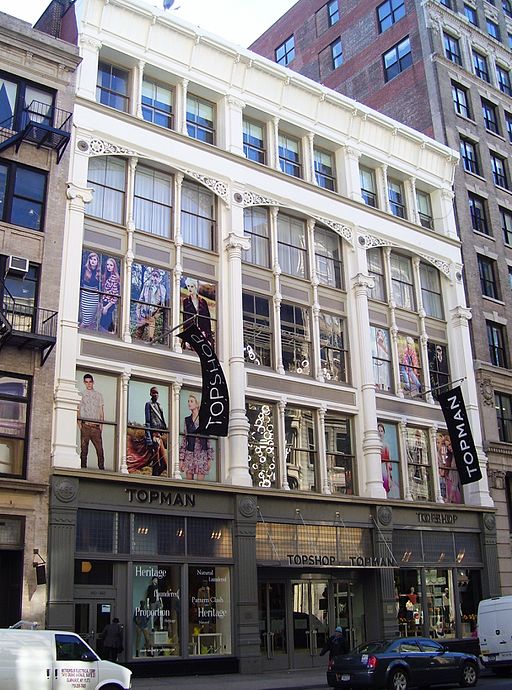The Roosevelt Building, located at 478 Broadway (between Broome and Grand), was built in 1874 and designed by architect Richard Morris Hunt. It is said to be one of the most significant cast iron buildings in the world. Although this building followed hundreds of other cast iron buildings before it (as a matter of fact, it is one of the last buildings to go up during the cast-iron era), this building is the first that does not try to hide the fact that it is made with iron by painting it as if it were masonry. “Iron need not pretend that it was something else,” Hunt said. (source: New York Architecture)
By the end of his career, Hunt would be known for designing The Breakers and Marble House in Newport for the Vanderbilts, as well as the Fifth Avenue façade of The Metropolitan Museum of Art and the pedestal for the Statue of Liberty.
This site was formerly home of J.P. Halle & co., purveyors of fine pianos, but the land was owned by the Roosevelt family. James Henry Roosevelt, who founded Roosevelt Hospital, bequeathed the land to the hospital upon his death. In 1873, the hospital commissioned Hunt to design and build a commercial and loft to raise funds through rental income.

Topshop at 478 Broadway today (source: Wikimedia Commons)
The building’s first tenant, in 1874, was Collins, Downing & Co., importers of wool. Rieser & Company, sellers of lace curtains, came in toward the end of the century. The were followed by:
Cole & Williams, manufacturers of plush and celluloid cases and novelties; Voss & Stern (Philip Voss sold laces and embroideries while Isaac Stern handled curtains and veilings); and Garner Sons & Co., jobbers of ribbons. While Louis Gartner and his sons dealt primarily in the very feminine product of silk ribbons, J. Gartner used the address as well for his business of breeding Great Danes. (source: The Daytonian)
Well into the 20th century, the building continued to attract manufacturers and wholesalers such has Max Kreienbuhl, who represented foreign hat manufacturers.
Other stores that later occupied space in this mixed use building during the 1980’s and 1990’s are Pure Madderlake, a florist that also sold antiques and Yellow Rat Bastard, a T-shirt and jeans store. British retailer Topshop currently occupies four of the five stories of the building.